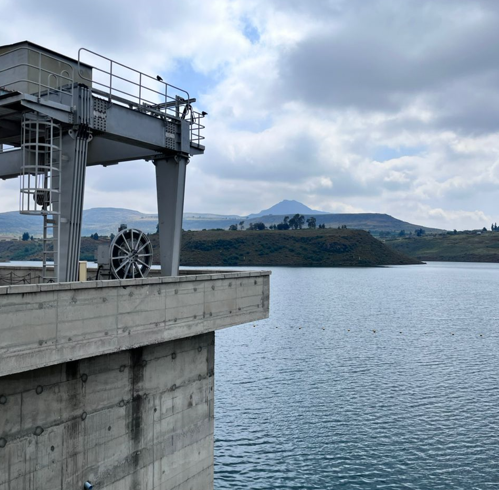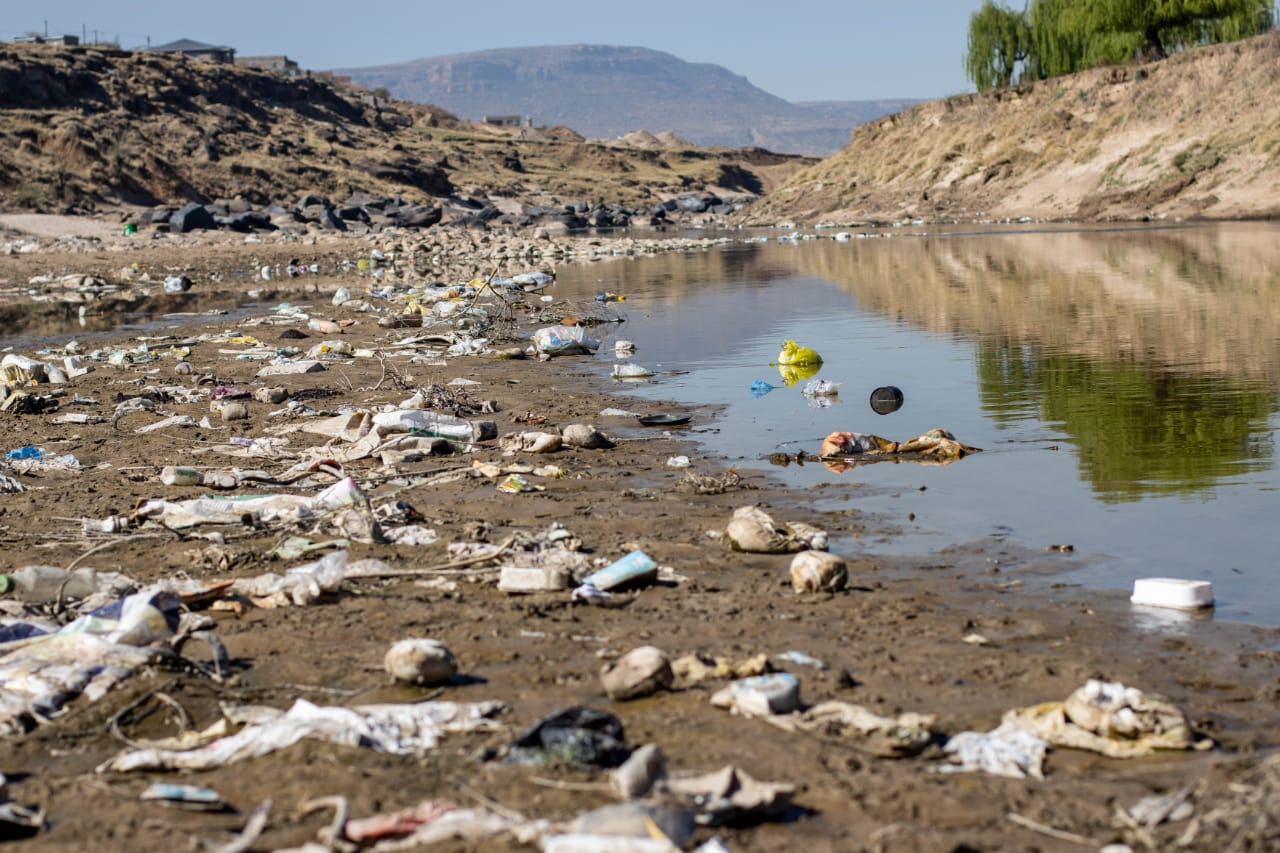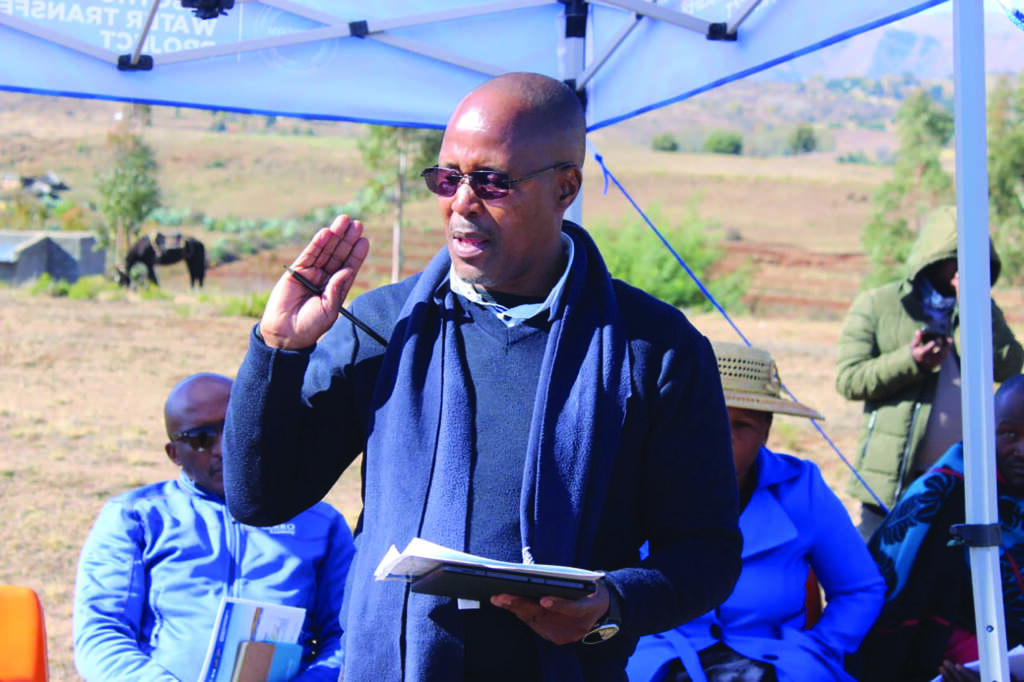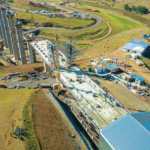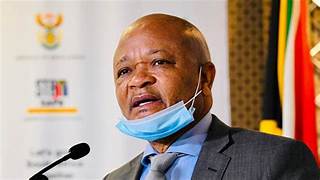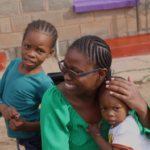Lawrence Seretse
MASERU, LESOTHO – As Southern Africa prepares to embark on the multi-billion-dollar Lesotho–Botswana Water Transfer (L-BWT) project, one of the most sensitive and politically charged questions has already surfaced: jobs. Who will get them, and how will they be shared across borders?
For Thabo Hloele, the Project Coordinator of the L-BWT under the Orange–Senqu River Commission (ORASECOM), this is not a side issue, it is central to the project’s survival. Speaking candidly at the dialogue in Maseru, he stressed that the time to confront labor questions is now, before construction begins.
“This conversation should start now while we are doing these studies,” Hloele said firmly.
The delicate balancing act
In the dialogue, Hloele recalled the tension that arises whenever mega-projects cross national lines. With Botswana, Lesotho, and South Africa all expecting jobs from the dam and 700-kilometer pipeline, it is easy for national pride and political pressure to clash with the realities of construction.
“There could be very good interest by the parties to say, ‘All the work we will share it equally.’ What a nice principle,” he acknowledged. “But to operationalise it is where the challenge is.”
He explained that without clear agreements, resentment could easily build. “Sometimes they’ll be like, ‘No, we are in Botswana now, you have got people from Lesotho working here,’ or, ‘We are in Lesotho now, you got people from South Africa doing the dam here.’”
The key, he argued, is for governments to move beyond verbal assurances and lock the principles into a legally binding framework. “If the parties, as early as possible, can domesticate the principles that have been agreed to, now operationalise them by domestication of the project treaty, that’s the answer to that,” Hloele said.
Why jobs cannot be left to chance
For Hloele, leaving labor issues vague or to be settled during construction would be a mistake. He painted a picture of the kind of detail that needs to be nailed down now.
“Where are you going to source material? How are you going to manage labor migration? How are you going to share the work?” he asked. “So these kind of things, if they can be discussed as early as now… by the time they sign the treaty, maybe in the next two years… it will be very clear.”
The stakes are high. A project of this magnitude will create thousands of direct and indirect jobs, from engineers and skilled technicians to local laborers and support services. Without a framework, unequal distribution could fuel disputes.
The urgency is not only about jobs but also about the water itself. Botswana and South Africa already face shortages. “The project should deliver the water as soon as possible. We are already behind,” Hloele warned.
This urgency makes it even more critical that labor issues are resolved early, not left to complicate the timeline. Delays caused by disputes could pushback the delivery of what he described as an essential lifeline.
Regional expertise at the forefront
A central point for Hloele is that Southern Africa already has the skills to deliver this project. He sees no reason to outsource the work to foreign companies if the region can mobilise its own expertise.
“We have regional expertise,” he declared. “So if these three countries can seriously… think carefully about this and to try and utilise local expertise as much as possible, they can deliver.”
He pointed to Botswana’s success in building the North–South Carrier pipeline, which stretches over 500 kilometers, as proof. “When I met with Botswana team and highlighted that we are now going to build a 700-kilometer pipe, they said to me Botswana has already moved over 500-kilometer pipes, North-South Carrier. So they said, ‘We’ve got experience. That 700-kilometer pipe is not going to be a problem with the experience that we have as Botswana.’”
On Lesotho’s side, he highlighted the country’s experience with major dam construction. “For dams, Lesotho has got experience building large big dams. And leveraging on that experience and knowledge, the dams and the pipeline can be completed within record time if everybody is on board and doing their things right.”
A catalyst for spinoffs
Beyond immediate jobs, Hloele painted a picture of how the project could spark new industries and long-term employment if managed correctly. He recalled Lesotho’s Minister of Natural Resources describing plans for additional benefits.
“The minister was saying with these water bodies, they’re going to do floating solar panels, and now also fisheries. These are some of the economic spinoffs… and jobs opportunities,” he said.
Such spinoffs could ensure that the project leaves behind more than just a pipeline, it could build a diversified economic base that supports thousands of livelihoods long after construction ends.
Voices of support from SADC and partners
International and regional partners echoed the importance of ensuring that the L-BWT delivers broad and lasting benefits.
Dr. Patrice Kabeya, from the SADC Secretariat’s Water Division, pointed to the bigger picture: “In the past, we have not been efficient in how we operate our hydropower systems, with countries acting in isolation and often missing the bigger picture of how these resources could be coordinated for maximum benefit. To move forward, we must ensure greater integration in how we manage these assets. At the same time, transmission infrastructure is critical. Without strong, interconnected transmission lines across the region, we cannot unlock the full potential of regional energy trade. Building that infrastructure is not just an energy priority, it is a water and development priority for SADC as a whole.”
From the German Government, Ms. Simone Goertz, Head of Economic and Development Cooperation at the Embassy in Botswana, underlined the long-term commitment: “Germany has been supporting transboundary water management in the SADC region for more than 20 years, and we are proud to have walked this journey together with our partners. Our commitment to the nexus reflects our belief that water is not just a resource but a driver of regional integration, resilience and prosperity. It is only through partnerships, through institutions like ORASECOM and the SADC Secretariat, that we can achieve sustainable development and ensure that water continues to be a source of cooperation and peace in Southern Africa.”
And Ms. Anna Renieri, Head of Cooperation at the EU Delegation in Lesotho, emphasised both Lesotho’s role and Europe’s investment. “Lesotho, as the water tower of Southern Africa, plays a critical role in ensuring regional water security. The resources here are essential not just for Lesotho, but for the prosperity of the wider SADC region. Since 2021, the Team Europe Initiative on Transboundary Water Management in Africa has implemented 51 actions worth €578 million, with SADC as one of the priority regions. Lasting water security in Southern Africa can only be achieved through action and coordination at all levels, local, national, regional, and continental. The EU Global Gateway is our vehicle for sustainable investment. Through it, we aim to support water-smart infrastructure and solutions that can unlock trade, energy, and food security across SADC.”
Making principles real
For Hloele, the task is clear: turn high-level principles into operational rules, negotiated transparently among the partner states, and enshrined in the treaty that will govern the project.
“This conversation should start now while we are doing these studies,” he repeated.
If that happens, the Lesotho–Botswana Water Transfer project could do more than deliver water. It could become a model for how SADC nations manage cross-border labor, share benefits fairly, and prove that regional expertise can rise to the challenge of mega-projects.
Summary
- For Thabo Hloele, the Project Coordinator of the L-BWT under the Orange–Senqu River Commission (ORASECOM), this is not a side issue, it is central to the project’s survival.
- “So these kind of things, if they can be discussed as early as now… by the time they sign the treaty, maybe in the next two years… it will be very clear.
- “When I met with Botswana team and highlighted that we are now going to build a 700-kilometer pipe, they said to me Botswana has already moved over 500-kilometer pipes, North-South Carrier.

Your Trusted Source for News and Insights in Lesotho!
At Newsday Media, we are passionate about delivering accurate, timely, and engaging news and multimedia content to our diverse audience. Founded with the vision of revolutionizing the media landscape in Lesotho, we have grown into a leading hybrid media company that blends traditional journalism with innovative digital platforms.


